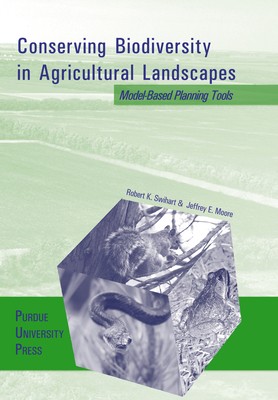
- We will send in 10–14 business days.
- Publisher: Purdue University Press
- Year: 2004
- Pages: 320
- ISBN-10: 155753327X
- ISBN-13: 9781557533272
- Format: 18.4 x 26.2 x 2.5 cm, kieti viršeliai
- Language: English
- SAVE -10% with code: EXTRA
Conserving Biodiversity in Agricultural Landscapes (e-book) (used book) | bookbook.eu
Reviews
Description
Habitat loss and fragmentation arguably pose the greatest threats to biological diversity. Agriculture is a dominant land use that, along with urban sprawl and residential development, can reduce the amount and connectedness of natural areas required by many native species. Unfortunately, progress has been slow in integrating nature and biodiversity protection into community planning in intensively farmed regions, especially in America's heartland. Seldom do issues related to species conservation receive consideration during local planning activities. Lack of progress stems partly from scientific inadequacies in understanding the dynamics of complex landscapes, and from a lack of engagement of non-scientific stakeholders by scientists and modelers. The result of these shortcomings is a critical disconnect of conservation issues from the planning infrastructure. This book provides a blueprint for advancing conceptual understanding of conservation in agricultural regions. It accomplishes this with a two-pronged approach: first, by developing spatially structured models that acknowledge the link between socio-economic drivers of land-use change and the dynamics of species occupying agricultural landscapes with abrupt changes in land cover (i.e., sharp edges); and second, by providing guidelines and examples to enable scientists to effectively engage stakeholders in participatory learning and planning activities that integrate biodiversity with other, more traditional, considerations. The structure of the book is truly interdisciplinary, linking the efforts of ecologists, economists, statisticians, mathematicians, and land-use specialists.
EXTRA 10 % discount with code: EXTRA
The promotion ends in 21d.04:28:49
The discount code is valid when purchasing from 10 €. Discounts do not stack.
- Publisher: Purdue University Press
- Year: 2004
- Pages: 320
- ISBN-10: 155753327X
- ISBN-13: 9781557533272
- Format: 18.4 x 26.2 x 2.5 cm, kieti viršeliai
- Language: English English
Habitat loss and fragmentation arguably pose the greatest threats to biological diversity. Agriculture is a dominant land use that, along with urban sprawl and residential development, can reduce the amount and connectedness of natural areas required by many native species. Unfortunately, progress has been slow in integrating nature and biodiversity protection into community planning in intensively farmed regions, especially in America's heartland. Seldom do issues related to species conservation receive consideration during local planning activities. Lack of progress stems partly from scientific inadequacies in understanding the dynamics of complex landscapes, and from a lack of engagement of non-scientific stakeholders by scientists and modelers. The result of these shortcomings is a critical disconnect of conservation issues from the planning infrastructure. This book provides a blueprint for advancing conceptual understanding of conservation in agricultural regions. It accomplishes this with a two-pronged approach: first, by developing spatially structured models that acknowledge the link between socio-economic drivers of land-use change and the dynamics of species occupying agricultural landscapes with abrupt changes in land cover (i.e., sharp edges); and second, by providing guidelines and examples to enable scientists to effectively engage stakeholders in participatory learning and planning activities that integrate biodiversity with other, more traditional, considerations. The structure of the book is truly interdisciplinary, linking the efforts of ecologists, economists, statisticians, mathematicians, and land-use specialists.


Reviews